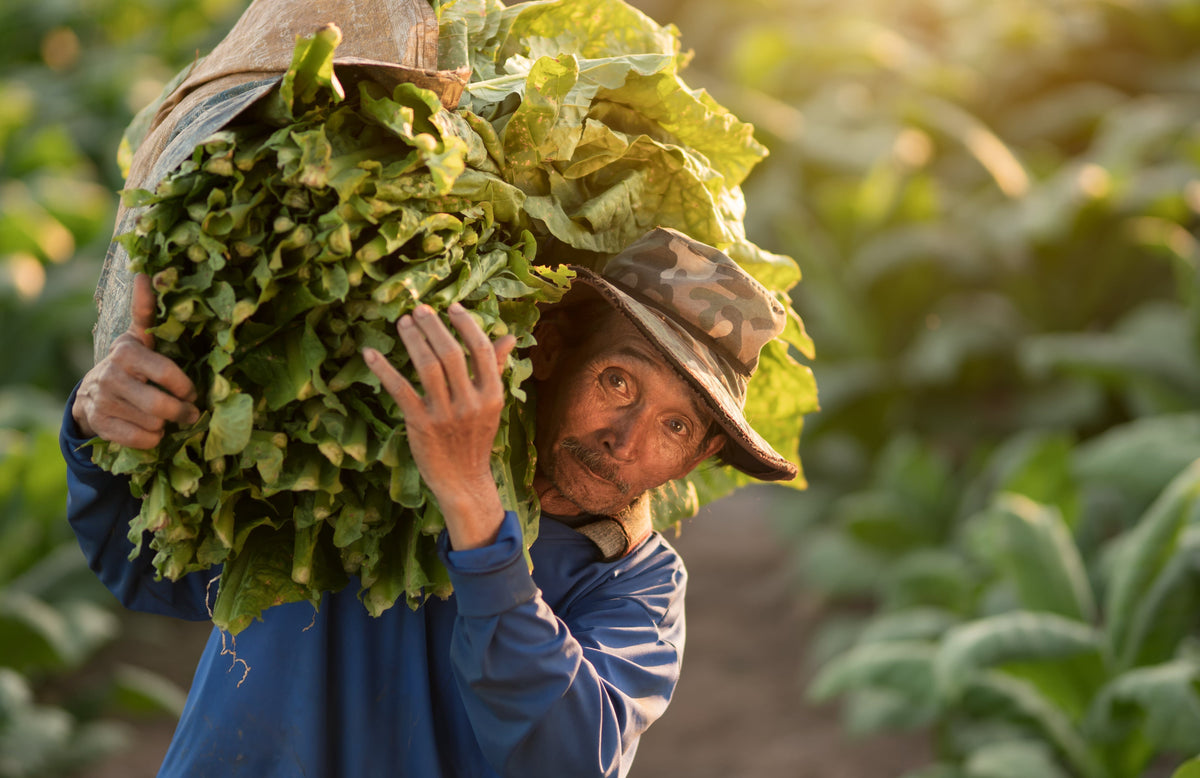
Different Ways Tobacco is Cultivated for Cigar Production
|
|
Time to read 4 min
Your cart is currently empty.
Shop our products|
|
Time to read 4 min
In the ever-evolving world of cigar aficionados and connoisseurs, the appreciation for a finely crafted cigar goes beyond the draw and flavor and is also about cultivation. While regions and climates play an influential role, the cultivation methods employed significantly shape the final product. In this let’s explore the different ways tobacco can be cultivated for cigar production, spanning traditional techniques to modern innovations.
Mainly, cigar tobacco growers prioritize specific attributes: resistance to diseases and pests, ample annual yields, suitable leaf size and texture, rich flavor and aroma, and optimal combustion properties.
The fundamental prerequisites for cultivating premium cigar tobacco encompass abundant sunshine, lengthy summer growing seasons, fertile yet well-drained soil, and high humidity levels. Regardless of the specific strain, each tobacco variety destined for cigar production follows a consistent cultivation process. Plants are arranged in rows spaced one meter apart, allowing for efficient care and harvesting, while enabling ample sunlight exposure.
The choice of soil varies based on the tobacco's purpose; binder and Claro cigar wrapper tobaccos thrive in sandy, loam-rich soils, while fire-cured varieties and Broadleaf cigar fillers flourish in silty volcanic loam or clay-heavy soils.
Successful cultivation entails germination under mulch or cloth, followed by transplanting after 8 to 10 weeks. While modern machinery aids tobacco planting, a significant portion is still planted by hand. Given tobacco's tropical origins, frost-free periods of 100-130 days are essential for full maturity, with most cigar tobacco favoring warm, humid climates. Consequently, many cigar-producing nations are located near the equator.
Cigar tobacco cultivation is an art that blends tradition and innovation. One of the most widely recognized and traditional methods is the age-old practice of tobacco farming. This involves selecting prime pieces of land with the optimal combination of sun, soil, and climate. Farmers meticulously prepare the soil, providing natural fertilization through organic materials. The use of rotation crops ensures the soil's health and reduces the risk of soil-borne diseases, leading to sustainable cultivation practices.
Intercropping is another traditional technique. By planting various plants together, tobacco benefits from natural pest repellents, improving its overall health. Integrated pest management, a practice rooted in organic farming, emphasizes a balance between beneficial insects and pests to maintain a healthy ecosystem.
The techniques used to cultivate the finest tobacco have evolved along with the cigar culture. One such innovation is hydroponic cultivation. This soilless method allows precise control over nutrient intake, water levels, and environmental conditions. Hydroponics promotes vigorous growth and mitigates pest and disease risks, ensuring consistently superior leaf quality. In locales with limited arable land, vertical farming has emerged as a transformative innovation. This method utilizes stacked layers of plants, allowing growers to maximize space and control conditions, ultimately producing premium cigar tobacco in unconventional environments.
Ecuador, renowned for its unique cloud-grown tobacco, produces wrappers that bestow distinct flavors and aromas on cigars. Indonesia’s Sumatra and Cameroon tobaccos, products of hybridization and adaptation, contribute to the complexity and diversity of cigar blends worldwide.
Let's take a geographical journey through some of the world's key cigar tobacco cultivation regions:
Birthplace of cigars, Cuba's tradition endures. Western havens yield complex, supple leaves for exclusive cultivation, crafting a timeless legacy.
Post-revolution migration led to the Yaqui Valley's exceptional tobacco, embraced by cool mountain air and clay-rich soil. Southern regions contribute premium wrappers.
Overcoming upheaval, Nicaragua thrives, delivering sweet, spicy, full-bodied cigars that captivate aficionados.
Parallel to Nicaragua, Honduras boasts similar conditions, nurturing a new generation of cigar makers post-Contra conflict.
San Andrés black tobacco flourishes in the Sierra de Los Tuxtlas, yielding wrappers renowned for their flavor and aroma.
Lush mountains host prized wrapper leaves like Connecticut and Sumatra, benefitting from volcanic ash-enriched soil.
While history lingers, premium cigars are mainly overseas. Yet, Miami, Tampa, and Connecticut River Valley keep traditions alive.
Despite challenges, Indonesia excels, with East Java producing unique, exceptional long-fillers prized for their flavor.
Africa's offerings blend mild, flavorful wrappers, often imbued with buttery, peppery, and leathery notes.
Volcanic terrain and clouds give Peru robust, long-filler tobacco, enriching the world of cigars.
Criollo, once a Cuban filler, has journeyed beyond its origins. The Nicaraguan Criollo delights with sweetness in Jalapa, while Estelí's Criollo offers earthy nuttiness. Meanwhile, the Honduran Criollo boasts creaminess, ascending as a prized wrapper.
Habano's dark, spicy allure intensifies with Habano 2000, born from Corojo-Cuban fusion. Disease resilience adds to its charm, reflecting meticulous genetic craftsmanship.
Piloto, a cornerstone of cigars, traces its lineage to Pinar del Rio in Cuba. Its robust spice-laden profile persevered in the Dominican Republic, a testament to the resilience of tobacco seeds.
Olor, another Dominican treasure, enchants with intricate burning and sought-after complexity, despite its delicate leaves.
Broadleaf evolves from filler to bold wrapper, especially in Connecticut. Its flavor supremacy, though challenging to handle, has earned its place, even in coveted Maduro cigars.
Connecticut Shade Tobacco, a tall, elegant cousin to Broadleaf, thrives under shade's gentle embrace. Blending Asian Sumatra and Cuban heritage, it delivers a mild yet refined flavor.
Cameroon tobacco emerges from Sumatra seed, gracing mild blends with buttery, peppery, and leathery undertones.
Sumatra Tobacco, once Indonesian, finds new life as Ecuador Sumatra's captivating wrapper. Its rich color, oil, and spice elevate the final masterpiece.
As cigar enthusiasts relish the intricacies of various tobacco kinds, the farming methods and local differences that shape each cigar's story become a vital part of the smoking adventure.